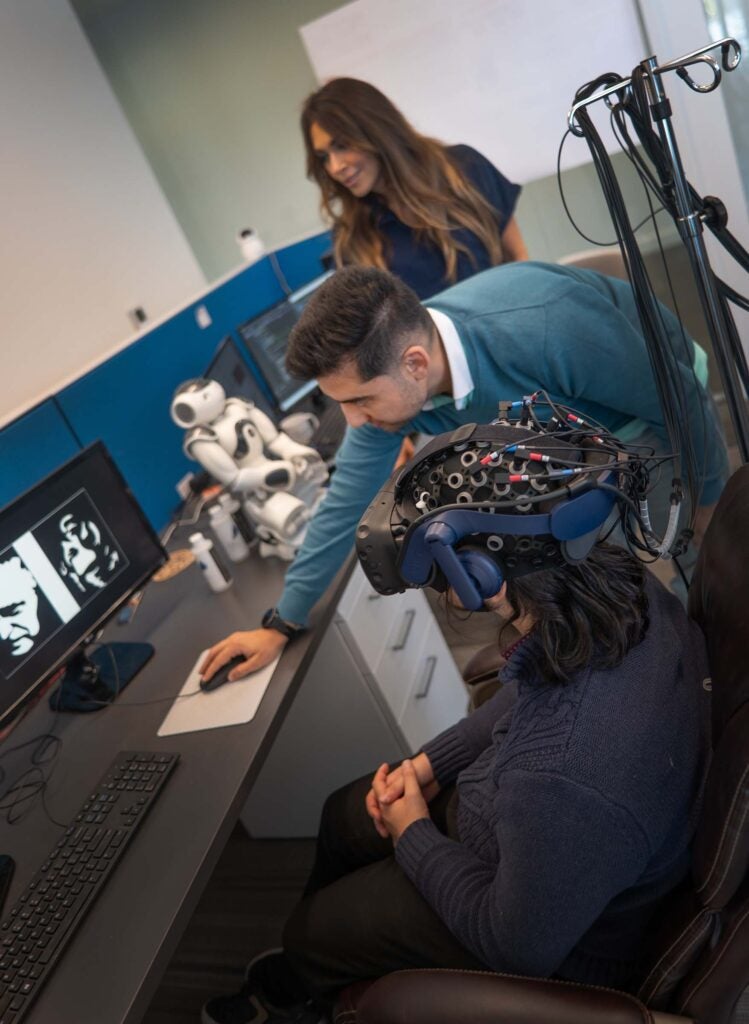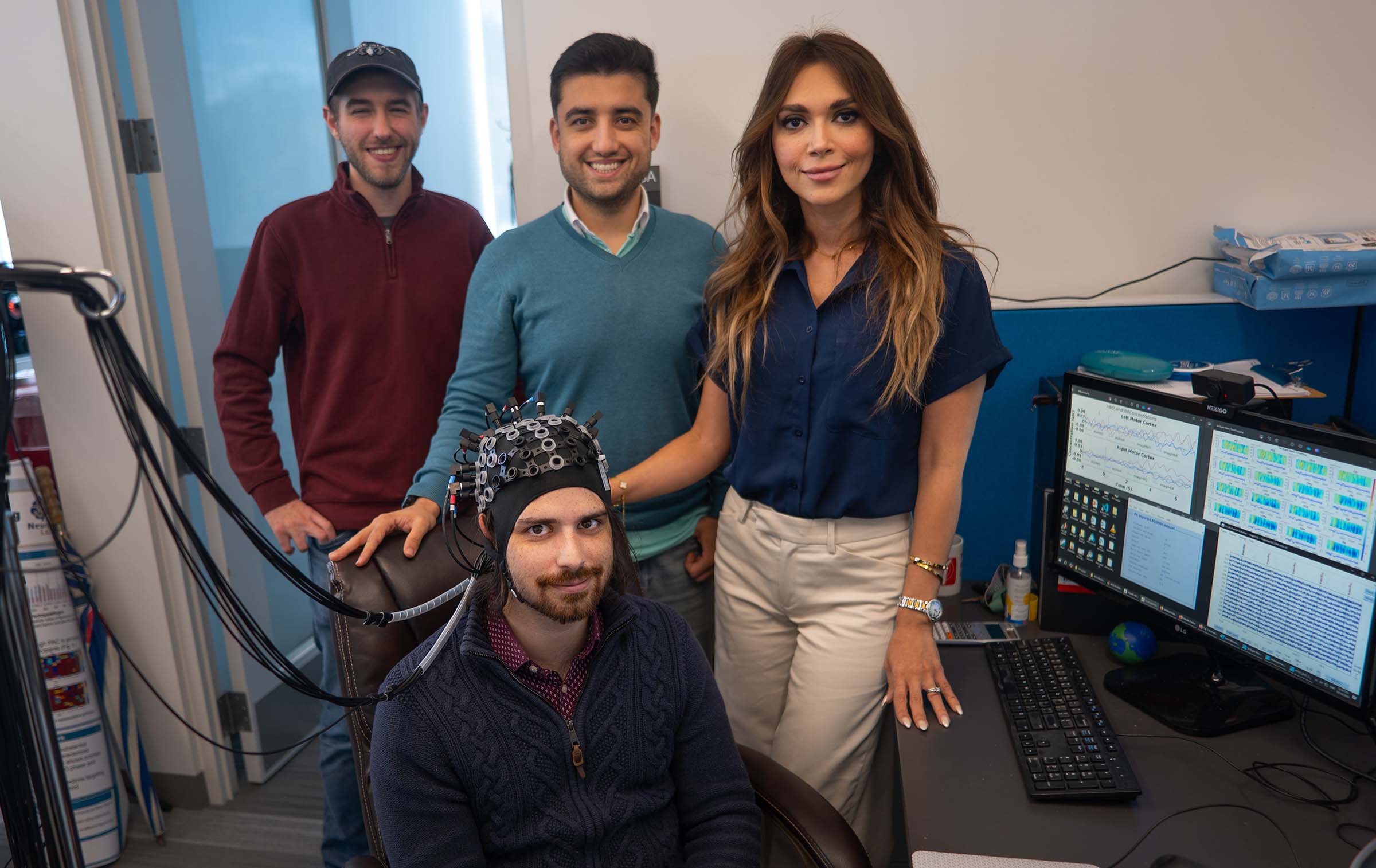KINGSTON, R.I. – Oct. 30, 2024 – University of Rhode Island biomedical engineering associate professor Yalda Shahriari has been awarded a three-year, $463,693 grant from the National Science Foundation for the proposal “Integrated framework for recording and decoding multimodal neural associations of visual hallucinations and motor functions in Parkinson’s disease,” research that will study hallucinations in Parkinson’s patients using immersive virtual reality.

Parkinson’s disease is a progressive neurodegenerative condition that disrupts mobility and mental abilities, causing motor and cognitive symptoms. One of the prevalent manifestations of cognitive dysfunction is visual hallucinations. These hallucinations are theoretically rooted in changes in neural dynamics that disrupt the functional state of neurons, influencing the electrical activity occurring in the cerebral cortex and blood flow in adjacent areas. Neural dynamics is activity, at the level of individual neurons and the whole brain, that reveals how people interpret environments to make decisions. They are observable at various areas in the cerebral cortex both spatially and temporally.

Understanding the mechanisms occurring over different levels of impaired neural interactions underlying visual hallucinations and their associations with motor functions in Parkinson’s remains a significant research gap.
“Despite extensive research on neural signatures of hallucinations in other neurological conditions like schizophrenia and dementia, the Parkinson’s disease diagnostic field lacks reliable cognitive neural markers for visual hallucinations that can be used for assessment and diagnosis. We’ll take the first steps in addressing this gap by investigating the underlying integrative neural markers of visual hallucinations as potential cognitive neural indicators in the disease and exploring their relationship with motor functions,” said Shahriari.
Shahriari’s research proposes using a novel dynamic multimodal framework within a controlled immersive virtual reality setting. It will explore and integrate the complex neural dynamics of visual perception and motor execution that allows people to recognize human faces based on their pattern and have motor functions to interact within a 3D environment.
The immersive virtual reality scenario will test multifaceted networks in the brain including visual perception, attention, motor initiation and execution functions as well as error detection through an innovative face detection coupled with reach-to-click paradigms.
The paradigm requires participants to move their arms towards a virtual button when recognizing a face. Utilizing a smart glove, finger movements will be recorded to determine the initiation of motor action and hand trajectories.
This is designed to evoke the responses in both visual perception and motor function while monitoring mutually interacting oscillations across electrical and vascular scales. Data recording and analysis from Parkinson’s patients through this study will provide a unique translational investigation in real-world settings, delivering key factors for development of practical diagnostic and monitoring techniques.
Shahriari will collaborate with additional experts on this project. Butler Hospital’s Dr. Joseph H. Friedman, neurologist and chief of the Movement Disorders Program, will oversee patient recruitment and clinical evaluation of Parkinson’s disease groups with and without visual hallucinations and control groups. University of Massachusetts Dartmouth associate professor Ming Shao will manage the design, development, and evaluation of machine learning algorithms, collaborating closely with Shahriari on merging multiple deep learning models.
One of the main projected outcomes of this research will be to discover neural markers of cognition in Parkinson’s disease and their associations with motor functions to improve early detection. One-third of individuals with Parkinson’s disease experience visual hallucinations, but up to 75 percent of patients develop such phenomena over a 20-year period. Hallucinations can often precede motor symptoms by up to 10 years. Early detection of visual hallucinations can play a crucial role in the management of consequent serious conditions.
This press release was written by Krysta Murray, a writer with the URI College of Engineering.



